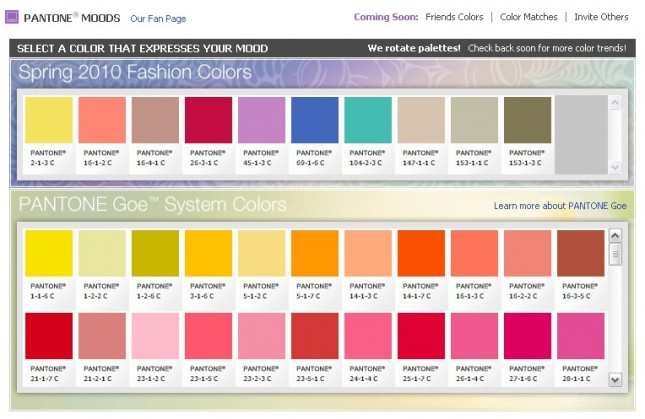
Flash File Uploader V3.2 (Allow All Filetypes)
Looking for a Flash File Uploader that allows you to set a custom directory and allows all filetypes?
Click here.
I was getting tired of upload scripts timing out in Flash and talked with Mike a little about creating an AJAX uploader. Unfortunately, AJAX has a difficult time updating a progress meter while an upload is running and it still cannot prevent browser requests from timing out on some servers. Granted, you still can use AJAX to do this and I’d recommend reading up on a number of online tutorials that offer solutions. However, up until the advent of Flash’s FileReference Object, programmers had to rely on server-side Perl scripts to manage these uploads and as Zeh so eloquently put it, “I love Flash’s upload. It’s so much better than the extremely crap HTML upload.” Using the new FileReference Object, I put together this handy-dandy Flash File Uploader to manage files with variable file limits. I have to be honest and say that the idea came from YouTube‘s “Upload Video” feature and may owe a little credit to them. The FLA is perfectly skinnable and can easily be adapted to restrict to filetypes (Images, Text, Audio, Video, etc.). This one is pretty standard as I’ll be creating the limitations on a per-use basis, depending on the application. Also, you’ll still need to have PHP running on your server and have access to change file/folder permissions, specifically the repository for uploaded files (default: /files/) I should also mention that NO security scripting has been included in the PHP file. upload.php simply copies the newly-uploaded file to a directory without performing any virus protection at all. So here’s my disclaimer.
Disclaimer: If you intend to use this script, you should be wary of people uploading viruses to your server. By downloading these source files, you agree to indemnify me of any damage from malicious attacks.
That being said, here’s what you’re getting:
1. uploader.fla Fully-skinnable Flash Source file (FLA) that enables browsing to a computer, selecting the file to be uploaded, initiating the upload and watching a progress meter, and completion. 2. upload.php Simply PHP file for moving the newly-uploaded file to a specific directory (default: /files/) 3. index.html HTML page which includes (by way of the Deconcept SWFObject) the uploader.swf, and parameters for php handling and file size limit. 4. SWFObject I included the JS file for your convenience. If you have questions about how to use the SWFObject, please see my previous tutorial, Activating an ActiveX Control’s Interface through Javascript. 5. Files Directory This is an empty placeholder directory for your uploaded-file storage. Make sure it is writeable!
This Page can help you to limit types of files that are being uploaded and I urge you to refer to your favorite PHP tutorial site for instructions on adding security to the upload.php script. Restrict to File Type (hard-coded): Here’s an easy upgrade to the above Flash File Uploader if you’d like to restrict uploads to specific file types (in this example, images and text files).After importing the FileReference Object:
import flash.net.FileReference; |
import flash.net.FileReference;
Enter the following code to create a file type array:
var allTypes:Array = new Array();
var imageTypes:Object = new Object();
imageTypes.description = "Images (*.jpg, *.jpeg, *.gif, *.png)";
imageTypes.extension = "*.jpg; *.jpeg; *.gif; *.png";
allTypes.push(imageTypes);var textTypes:Object = new Object();
textTypes.description = "Text Files (*.txt, *.rtf)";
textTypes.extension = "*.txt;*.rtf";
allTypes.push(textTypes); |
var allTypes:Array = new Array();
var imageTypes:Object = new Object();
imageTypes.description = "Images (*.jpg, *.jpeg, *.gif, *.png)";
imageTypes.extension = "*.jpg; *.jpeg; *.gif; *.png";
allTypes.push(imageTypes);var textTypes:Object = new Object();
textTypes.description = "Text Files (*.txt, *.rtf)";
textTypes.extension = "*.txt;*.rtf";
allTypes.push(textTypes);
Then, simply modify the browse method
to only use the new Array’s file types:
Restrict to File Type (dynamic): Now let’s make it a bit more interesting. Add the below variable to your SWFObject:
fo.addVariable("types", "image|text|audio|video"); |
fo.addVariable("types", "image|text|audio|video");
Remove the hard-coded AllTypes array (above) and enter this instead:
if (_root.types != undefined) {
var typesArray = _root.types.split("|");
var allTypes:Array = new Array();
var len:Number = typesArray.length;
for (var i:Number = len; --i>=0; )
switch (typesArray[i]) {
case "image" :
var imageTypes:Object = new Object();
imageTypes.description = "Images (*.jpg, *.jpeg, *.gif, *.png)";
imageTypes.extension = "*.jpg; *.jpeg; *.gif; *.png";
allTypes.push(imageTypes);
break;
case "text" :
var textTypes:Object = new Object();
textTypes.description = "Text Files (*.txt, *.rtf)";
textTypes.extension = "*.txt;*.rtf";
allTypes.push(textTypes);
break;
case "video" :
var videoTypes:Object = new Object();
videoTypes.description = "Video Files (*.avi, *.flv, *.mov, *.wmv)";
videoTypes.extension = "*.avi;*.flv;*.mov;*.wmv";
allTypes.push(videoTypes);
break;
case "audio" :
var audioTypes:Object = new Object();
audioTypes.description = "Audio Files (*.aif, *.mp3, *.wav, *.wma)";
audioTypes.extension = "*.aif;*.mp3;*.wav;*.wma";
allTypes.push(audioTypes);
break;
}
}
} |
if (_root.types != undefined) {
var typesArray = _root.types.split("|");
var allTypes:Array = new Array();
var len:Number = typesArray.length;
for (var i:Number = len; --i>=0; )
switch (typesArray[i]) {
case "image" :
var imageTypes:Object = new Object();
imageTypes.description = "Images (*.jpg, *.jpeg, *.gif, *.png)";
imageTypes.extension = "*.jpg; *.jpeg; *.gif; *.png";
allTypes.push(imageTypes);
break;
case "text" :
var textTypes:Object = new Object();
textTypes.description = "Text Files (*.txt, *.rtf)";
textTypes.extension = "*.txt;*.rtf";
allTypes.push(textTypes);
break;
case "video" :
var videoTypes:Object = new Object();
videoTypes.description = "Video Files (*.avi, *.flv, *.mov, *.wmv)";
videoTypes.extension = "*.avi;*.flv;*.mov;*.wmv";
allTypes.push(videoTypes);
break;
case "audio" :
var audioTypes:Object = new Object();
audioTypes.description = "Audio Files (*.aif, *.mp3, *.wav, *.wma)";
audioTypes.extension = "*.aif;*.mp3;*.wav;*.wma";
allTypes.push(audioTypes);
break;
}
}
}
Down by the browse statement, change the browse method to this:
browse.onRelease = function() {
if (allTypes != undefined) {
file.browse(allTypes);
} else {
file.browse();
}
; |
browse.onRelease = function() {
if (allTypes != undefined) {
file.browse(allTypes);
} else {
file.browse();
}
;
Republish your Flash file and experiment with changing the variable in your SWFObject to change the file type restrictions. Show only images:
fo.addVariable("types", "image"); |
fo.addVariable("types", "image");
Show only text files:
fo.addVariable("types", "text"); |
fo.addVariable("types", "text");
Show only video files:
fo.addVariable("types", "video"); |
fo.addVariable("types", "video");
Show only audio files:
fo.addVariable("types", "audio"); |
fo.addVariable("types", "audio");
Show all:
fo.addVariable("types", "image|text|audio|video"); |
fo.addVariable("types", "image|text|audio|video");
Pretty nifty, eh? For questions, feel free to submit a comment. Enjoy!
May 30, 2008 – Added script to Flash and PHP to stripslashes which in previous versions broke Javascript functions.
August 18, 2007 – Suppressed the “A script in this movie is causing Flash Player to run slowly” browser alert (Thanks to Matt Kull, Zeh and Pete).
June 17, 2007 – Mike updated the PHP files to enable caching of auto-generated thumbnails, preview mode (prior to upload) and fixed some security issues.



